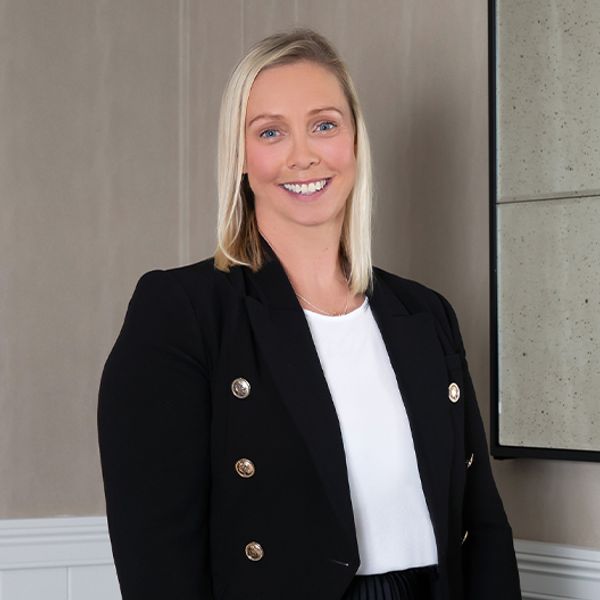
What are the upfront and hidden costs of buying a property?
When it comes to buying a home in New South Wales, many people, especially first-time buyers, only consider their home loan deposit and the purchase price of the property. They don’t factor in the multitude of other expenses (both small and large) that come with buying property.
This can lead to unpleasant and sometimes very expensive surprises. So, in this article, we’d like to walk you through what are often referred to as the ‘hidden’ costs of buying a property in NSW.
Our goal with this comprehensive guide is to help you budget more effectively as you move towards owning your own home. As always, if you have any questions, please contact our expert team.
Upfront costs of buying a property in NSW
When buying any property, it’s easy to focus solely on its sale price. However, there are several upfront costs you'll also need to budget for before the settlement is complete.
We’ll go into them in more detail later, but here’s a quick summary of the possible expenses:
- Deposit: 5–20% of total purchase price
- Transfer duty: $28,279 for a $750,000 property
- Home loan application fee: $500–$1,000
- Valuation fee: $200–$300
- Lender's mortgage insurance: Thousands of dollars
- Mortgage service fees: $250–$450
- Mortgage registration fee: $150
- Transfer registration: $150
- Building inspection: $400–$1,200
- Pest inspection: $150–$300
- Strata report: $250–$350
- Survey report: $400–$700
- Conveyancing and legal fees: $700–$2,500
Why these costs matter
The figures outlined above are approximate costs. However, as you can see, these upfront fees can quickly increase your buying costs.
What you’ll actually end up paying will vary, depending on several factors. The most influential one is the type of property you’re purchasing. However, whether you’re a first-home buyer, investor, or existing homeowner will also have an effect.
When purchasing a property, being aware of the likely upfront expenses you will face is vital to your budgeting. If you don’t forecast for them, you can expose yourself to potential financial stress later down the road.
Upfront costs explained
You may be wondering what these upfront costs are. And, more pertinently, you may be asking why you need to pay them. Here’s an overview of what they are and why they’re part of the house-buying process in NSW.
1. Deposit
The largest upfront cost you’re likely to incur is your deposit. This is usually payable when you sign the contract of sale.
Typically, lenders require you to pay between 5% and 20% of the total purchase price as your deposit. Therefore, if the property costs $750,000, you’ll be expected to front anywhere between $37,000 and $150,000, depending on the lender’s terms. (However, you can pay more if you’re able.)
This payment secures your interest in the property as a buyer. It’s also taken as a firm demonstration of your commitment to completing your end of the deal.
2. Transfer duty
Transfer duty is a government tax on property transactions. Until recently, it was better known as ‘stamp duty’.
For most people, it is the largest upfront cost they’ll face after the deposit. The amount depends on the purchase price, property type, and whether you're a first-home buyer or not.
It also differs depending on which state or territory you have bought a home in. However, in New South Wales, someone purchasing a $750,000 home may pay:
- $0 if they qualify for first-home buyer exemptions
- Around $28,279 if they don’t
Stamp duty calculators are available on most state government websites. They can help you make a more accurate estimate of your potential transfer duty cost. You can use this one for property purchases within New South Wales.
3. Home loan fees
Besides paying the interest on your home loan over its lifetime, you’ll also face some additional upfront costs.
These may vary depending on your loan and your lender. It’s important to ask your broker or your financial institution for all the information before you sign on the dotted line. Here are some of the things you may be charged for:
Home loan application fee (estimated cost: $500–$1000)
This is a one-off fee that you pay your lender for setting up the loan. It will differ according to the type and size of the loan you take out. Additionally, it may also vary if you use a mortgage broker.
It’s worth trying to negotiate this fee, as some institutions may waive it under certain circumstances.
Valuation fee (estimated cost: $200–$300)
Lenders often conduct a property valuation to confirm that its market value aligns with the purchase price.
This helps them determine how much they’re willing to lend. But it also ensures that if you default on the mortgage, they’ll recover the amount they lent you by selling the property.
Many lenders absorb this cost, although some may pass it on to the buyer.
Lender’s mortgage insurance (LMI) (estimated cost: over $10,000)
If you don’t have a 20% deposit, lenders may charge you for an insurance policy. This is to protect them against you borrowing more than 80% of the property’s purchase price.
The amount they charge will vary depending on the type of loan you take out and the institution. To give you an idea, the estimated LMI on an $850,000 loan for a $1,000,000 property could be anywhere from $11,500 to $15,000.
If you aren’t a first-time buyer, you’ll also pay stamp duty on the LMI.
Mortgage service fees (estimated cost: $250–$450 per year)
Some lenders won’t charge service costs, but others will. It’s well worth your time to confirm this with your lender so you can budget accordingly.
4. Government fees
Aside from transfer duty, there are a couple of other government fees you may need to pay. They include:
Mortgage registration fee (estimated cost: $150)
A mortgage must be registered to ensure that a borrower can’t legally sell a property without paying back the lender. To do this, the state government will charge you a registration fee.
Transfer registration (estimated cost: $150)
The state government will also charge you a fee to register the transfer of property ownership to your name.
5. Inspections and report costs when buying a property
It’s highly advisable to have professional inspections carried out before you buy a property as part of your due diligence.
Not only is this good for your own peace of mind, but it can also help with your loan application.
These inspections include:
Building inspection (estimated cost: $400–$1,200)
A building inspection, carried out by a qualified professional, will provide you with a report of the property’s condition. It will highlight any significant defects or problems with the building and site, such as rising damp or structural defects.
Pest inspection (estimated cost: $150–$300)
A building inspection can identify existing damage caused by pests. However, a qualified pest inspector will determine if your property still has termites or other pests that may affect the structural integrity of the building.
Strata report (estimated cost: $250–$350)
If you intend to buy into a strata property, you may want to get a strata report as part of your due diligence. This will ensure that the body corporate of the building you’re buying into is in good financial condition.
It will also highlight if there are any upcoming major expenditures you should be aware of.
Survey report (estimated cost $400–$700)
Depending on the type of property you want to buy, lenders may ask you for a survey report. This will show the boundaries of the property that you’re buying and the location of any buildings within it.
6. Conveyancing and legal fees
When you’re buying a property, it’s essential to engage a licensed conveyancer or property solicitor to handle the legal side of the transaction.
These professionals will prepare, exchange, and complete your contracts. They will also pay several expenses on your behalf, which they will then pass on to you. These include title searches, local council certificates, and other disbursements.
Conveyancing fees and charges vary significantly. But they generally cost anywhere from $700 to $2,500. However, the actual amount you’ll pay will depend on the professional you’ve selected, the property and the complexity of the exchange.
It is possible to do your own conveyancing, but having a professional manage the legal process for you will reduce risks and the potential for delays.
Ongoing costs to expect after settlement
When you move into your new property, there will be several ongoing costs that you should factor into your regular expenses.
Some of these might be fixed, or at least predictable, costs. However, others will vary depending on the type of property you want to buy, the location and how the home is used.
Here are some of the main recurring expenses to plan for:
- Council rates: These are charged by your local council to cover waste services, public facilities and infrastructure. The amount you pay is dependent on your postcode. You can estimate your Sydney council rates here.
- Water rates: This is set by your local water authority, and it varies depending on the provider, your household size and usage.
- Utilities: Like water rates, your electricity and gas costs will depend upon your usage. (An estimated cost could be $250–$600 per quarter)
- Strata or body corporate fees: If you own an apartment or townhouse in a strata complex, you’ll have to pay regular levies for shared maintenance and services. This could range from $30 to $600 a week.
- Home and contents insurance: This covers the structure of your building and your belongings in the event of damage or loss. According to Canstar, the average cost in NSW is $6.05 per day.
- Maintenance and repairs: You’ll want to stay on top of any repairs and upkeep work that needs to be done. This will help preserve the value of your property. It's a good idea to budget at least $1,000 for this each year.
- Pest control: By scheduling preventative measures, you can reduce the risk of termite or pest issues. The cost will be dependent on what needs to be done. Always get a quote to help you budget before engaging a pest control service.
Transfer duty concessions for NSW first‑home buyers
If you’re a first-home buyer in New South Wales, you may be surprised by how much you can save on transfer duty if you’re eligible for exemptions and concessions.
Most state governments, including that of NSW, offer stamp duty exemptions. You can find out more details here, but to summarise:
- First home buyers do not pay stamp duty on new or existing homes up to $800,000.
- They can apply for a concessional transfer duty rate for properties valued between $800,000 and $1,000,000.
These savings can help reduce the burden of the hidden costs associated with buying a home.
How to avoid nasty surprises
Buying a property is a major personal and financial commitment. Unexpected costs can catch buyers off guard, but thankfully there are a few things you can do to avoid any unwelcome surprises.
They include:
- Always get a few quotes up front for different conveyancers, removalists and inspections. This will allow you to compare costs before committing.
- Be sure to ask your lender for a full breakdown of their fees. This should include any loan application fees, LMI and ongoing charges.
- Use an online cost calculator, like the Moneysmart mortgage calculator, to estimate your borrowing power and what your repayments would be.
- Read the fine print of your loan agreement and any strata or body corporate documentation to fully understand them.
- Set aside a contingency fund of at least 5% of the purchase price to cover unexpected costs after settlement.
Final word: Plan ahead and buy with confidence
There are a lot of expenses associated with buying a house. Being prepared for them will help you budget carefully. It will also ensure you have enough cash to meet your obligations and transition into your new home as smoothly as possible.
Regardless of whether you're a first-home buyer or seasoned investor, having expert guidance can make all the difference.
At DiJones, we’re here to help you navigate the buying process with confidence and clarity. Contact our team or find a local agent to talk through your next property move.
FAQs
How do I calculate transfer duty?
The cost of transfer duty in NSW varies depending on factors like property price, type of buyer and whether you're eligible for concessions. Use the NSW Government stamp duty calculator to get an estimate based on your circumstances.
Do I need to pay lender’s mortgage insurance (LMI)?
LMI usually applies when your deposit is less than 20% of the property’s value. The cost is determined by your deposit size and loan amount, but it could add thousands to your total loan.
What are strata fees, and who pays them?
Strata (or body corporate) fees only apply if you’re buying into a shared complex, such as an apartment building. These cover the cost of maintaining shared areas and facilities, such as lifts or swimming pools.
How much should I budget for hidden costs?
It’s wise to allow an extra 5% of the purchase price to cover all upfront and ongoing expenses.
N.B - This article was originally written by Lisa-Jane Roberts and updated and optimised by Carly Dircks.
Was this content helpful to you?






